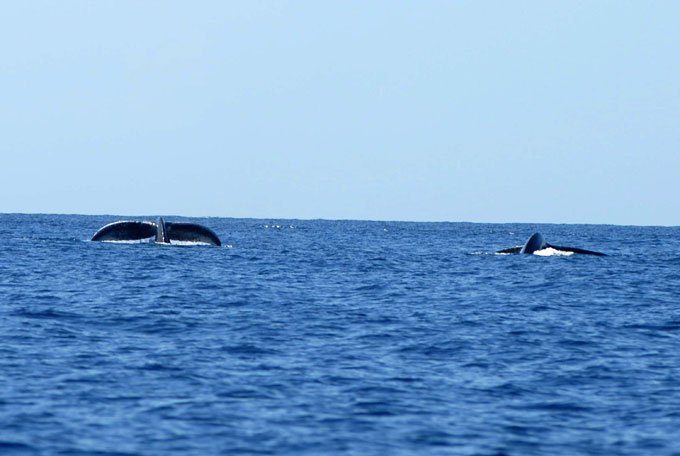Humpback whale: Acrobatic animal

The humpback whale (Megaptera novaeangliae) is a species of baleen whale.
All photos: Splash/All Over Press
The humpback whale (Megaptera novaeangliae) is a species of baleen whale.
All photos: Splash/All Over Press

One of the larger rorqual species, adults range in length from 12-16 metres (39-52 ft) and weigh approximately 36,000 kilograms (79,000 lb). The humpback has a distinctive body shape, with unusually long pectoral fins and a knobbly head.
All photos: Splash/All Over Press
One of the larger rorqual species, adults range in length from 12-16 metres (39-52 ft) and weigh approximately 36,000 kilograms (79,000 lb). The humpback has a distinctive body shape, with unusually long pectoral fins and a knobbly head.
All photos: Splash/All Over Press

It is an acrobatic animal, often breaching and slapping the water. Males produce a complex song, which lasts for 10 to 20 minutes and is repeated for hours at a time. The purpose of the song is not yet clear, although it appears to have a role in mating.
All photos: Splash/All Over Press
It is an acrobatic animal, often breaching and slapping the water. Males produce a complex song, which lasts for 10 to 20 minutes and is repeated for hours at a time. The purpose of the song is not yet clear, although it appears to have a role in mating.
All photos: Splash/All Over Press

Found in oceans and seas around the world, humpback whales typically migrate up to 25,000 kilometres (16,000 mi) each year. Humpbacks feed only in summer, in polar waters, and migrate to tropical or sub-tropicalwaters to breed and give birth in the winter.
All photos: Splash/All Over Press
Found in oceans and seas around the world, humpback whales typically migrate up to 25,000 kilometres (16,000 mi) each year. Humpbacks feed only in summer, in polar waters, and migrate to tropical or sub-tropicalwaters to breed and give birth in the winter.
All photos: Splash/All Over Press

During the winter, humpbacks fast and live off their fat reserves. The species' diet consists mostly of krill and small fish. Humpbacks have a diverse repertoire of feeding methods, including the bubble net feeding technique.
All photos: Splash/All Over Press
During the winter, humpbacks fast and live off their fat reserves. The species' diet consists mostly of krill and small fish. Humpbacks have a diverse repertoire of feeding methods, including the bubble net feeding technique.
All photos: Splash/All Over Press

Like other large whales, the humpback was and is a target for the whaling industry. Due to over-hunting, its population fell by an estimated 90% before a whaling moratorium was introduced in 1966.
All photos: Splash/All Over Press
Like other large whales, the humpback was and is a target for the whaling industry. Due to over-hunting, its population fell by an estimated 90% before a whaling moratorium was introduced in 1966.
All photos: Splash/All Over Press

Stocks have since partially recovered; however, entanglement in fishing gear, collisions with ships, and noise pollution also remain concerns
All photos: Splash/All Over Press
Stocks have since partially recovered; however, entanglement in fishing gear, collisions with ships, and noise pollution also remain concerns
All photos: Splash/All Over Press

There are at least 80,000 humpback whales worldwide. Once hunted to the brink of extinction, humpbacks are now sought by whale-watchers, particularly off parts of Australia, New Zealand, South America, Canada, and the United States.
All photos: Splash/All Over Press
There are at least 80,000 humpback whales worldwide. Once hunted to the brink of extinction, humpbacks are now sought by whale-watchers, particularly off parts of Australia, New Zealand, South America, Canada, and the United States.
All photos: Splash/All Over Press

All photos: Splash/All Over Press

All photos: Splash/All Over Press



